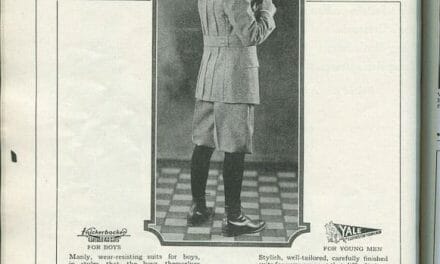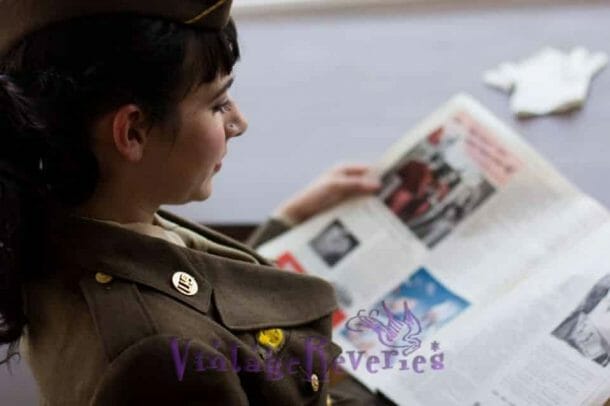
Art Studies 100 Years Ago Were as Daring as Today’s

What an absolutely fascinating glimpse into the history of nude photography and figure studies! This short piece from the 1953 Cheesecake Pinup Magazine offers a unique perspective on how artistic daring has evolved over time while showing that the roots of many modern sensibilities stretch far deeper than we might imagine.
The article claims that by the 1850s, “cheesecake,” as a playful term for provocative imagery, was already widely circulated, with the practice capturing the imaginations of people from across various walks of life. It goes on to mention how even “comely Indian maidens from the Reservations posed happily” during this period, adding a layer of historical complexity to the narrative. A fascinating historical footnote is the disagreement among experts regarding when nude photography truly began. While stereotype photography—rigid, posed images captured using early photographic techniques—was gaining steam in the mid-19th century, one cannot overlook Louis Daguerre’s experimental work prior to this period. Daguerre’s 1839 photograph of a bas relief of a nude is often considered one of the earliest accidental incorporations of the human form into photography’s emerging art form.
By the 1870s, nudity in art transitioned from being something purely hidden or scandalous to a form regularly explored by artists, particularly in Europe. Early figure studies from this time weren’t necessarily intended to titillate but were often used as references for painters, sculptors, and other artists. This period also coincided with technological advancements in photography, such as the development of the wet collodion process, which allowed for sharper, more detailed images. Such advances made it possible to create the three “unusual photos taken about 80 years ago” (as mentioned in the article), which this magazine so cheekily showcases. These photos, likely dating back to the 1870s, reflect not just risqué experimentation but a growing interest in preserving and studying the human form through new mediums of expression.
The article also features a contemporary (for the time) color photograph by Jules Alexander—a striking modern figure study from the 1950s. This photograph immediately grabs attention, blending artistic sophistication with the playful cheekiness associated with cheesecake art. It depicts a nude woman next to an electric fruit slicer, a surreal juxtaposition that highlights the boldness of mid-20th-century figure photography. By this point, figure studies were no longer solely tied to realism or academic tradition but integrated with modern artistic movements such as surrealism and abstraction. These artistic trends reflected broader cultural shifts toward exploring identity, technology, and innovation, making works like Alexander’s not just provocative but reflective of the era’s creative boldness.
The history of figure photography also includes a strong crossover with broader cultural and moral debates of the time. During the Victorian age, nudity in art had been frowned upon in certain circles, particularly in the English-speaking world where modesty was rigorously upheld. Nevertheless, French artists and photographers, alongside others across Europe, pressed forward, viewing nude and suggestive imagery as a legitimate form of fine art. By the late 19th century, photographic studios catering to figure studies flourished. Nude imagery for artistic purposes became especially influential during this period, helping to normalize its presence in fine art and academic circles. However, these early works frequently walked the fine line between high art and controversial entertainment, an ambiguity still present in cheesecake photography of the 1950s.
The juxtaposition of these 19th-century groundbreakers next to an electric fruit slicer feels almost poetic, drawing a line from photography’s early experiments to the modern, unapologetically quirky perspective of the 1950s. Indeed, Jules Alexander’s work exemplifies this blending of tradition and innovation. His glamorous yet humorous approach to figure studies mirrors the rapid societal changes of the post-war era. By the 1950s, cheesecake photography had become an industry unto itself, celebrated in magazines like Cheesecake Pinup and sought after by collectors and fans alike. Art photography was thus expanding its reach, embracing a playful accessibility while still invoking its rich historical roots.
In revisiting these moments in history, the 1953 article reveals that risk-taking in art—whether through photography, painting, or sculpture—has long been a hallmark of human creativity. The images and stories it presents are a testament to the enduring fascination and beauty of the human form, showing how innovations in tools and changing cultural attitudes shape what is considered “daring” across different eras. From Daguerre’s experimental daguerreotypes to the tongue-in-cheek cheesecake photos of the 1950s, one thing remains consistent: the desire to capture the human body as both an object of study and a subject of wonder.
While flipping through this Cheesecake Pinup Magazine, we are reminded of how photography’s historical journey intertwined with broader shifts in artistic ambition. Nudity, once a practice confined to cloistered salon art, had by the mid-20th century become a cultural phenomenon with a far wider reach—both celebrated and critiqued. What changes we’ll see over the next one hundred years could be just as daring. But one thing is for certain: the audacious spirit of artists from the 19th and 20th centuries will always provide a fascinating backdrop for the ongoing story of art and creativity.



















You must be logged in to post a comment.